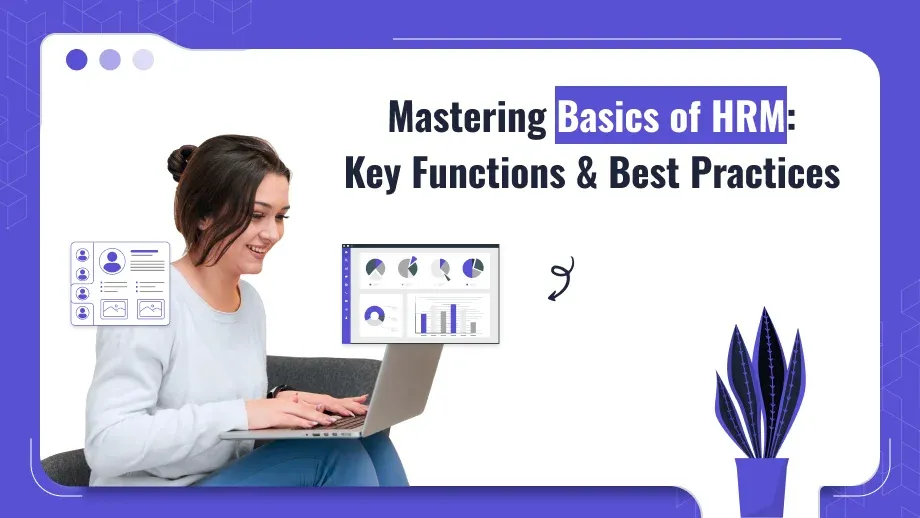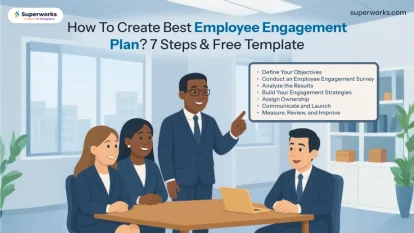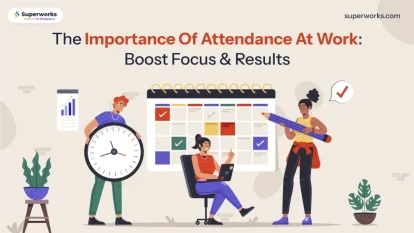
Human Resource Management is the spine of any organization and influences almost every function of the company-from talent acquisition to employee satisfaction and retention. Basic of HRM would be useful for anyone new in this field or even management involved in improving their understanding. This comprehensive book addresses the fundamental and strategic roles of a person involved basics of HRM that could help to create an effective and productive workforce. An understanding of the basics of human resource management will enable leaders to assemble teams that can assist in helping an organization achieve its desired objectives and grow to higher heights.
Core Components of HRM
The heart of basic HR concepts lies in its core functions. All of the HR components found in HR work harmoniously toward seamless continuity in dealing with talent, maintaining organizational culture, and spurring productivity.
- Recruitment and Selection: Recruitment refers to the process of creating job descriptions, posting openings, screening applicants, and interviewing. Selection also does more than this by checking the skills of candidates and cultural fit by giving various tests, reference checks, and in-depth interviews. Good recruitment in HRM saves costs and time as it ensures that fewer people leave and the right people join the organization right from the outset. Even big organizations can use some of the basics of HRM and applicant tracking systems (ATS) to smooth the recruitment process.
- Onboarding: This is an effective way of creating an orientation process to be regarded as an onboarding in HRM that helps new employees get used to the company culture, gain experience about their new roles, and form their first relationships with workmates. Successful onboarding results in a positive value added: an employee who experiences an efficient onboarding process is likely to be retained by 25%.
- Training and Development: HRM does not stop with recruitment; training is one of the vital ingredients to create an efficient workforce. Training in HRM is upskilling by providing workshops, courses, and also hands-on training. Development involves future career development and always progresses employees in their careers to make them more efficient and stable in the firm.
- Compensation and Benefits: Such as salary, bonuses, healthcare, retirement plans, etc. The degree of openness and competitiveness of compensation packages helps to keep the workforce. More organizations also make use of HRMS payroll software in India and abroad to have efficient payrolls, together with accuracy and compliance.
- Employee Relations: The entire purpose of employee relations is to help realize the ideal workplace culture by addressing the issues of employees, resolving conflicts that may arise, and communicating properly with the employees. The basics of HRM professionals will have to work out issues that would impact teams at various levels, maintain morale, and contribute toward a respect-and-support-based culture.
These are the HR components and core building blocks of HRM that help organizations in attracting, developing, and retaining human talent in the right direction.
Strategic Role of HRM in Business Growth
HRM does not play only an administrative role but rather a strategic role of HRM making a business grow. It remains a strategic focus for business leaders to stay ahead in the competition to be aligned with business growth.
- HRM will align the talent of the organization: Its goals through workforce planning, performance management, and skill-gap analysis. For instance, if an organization wants to grow in digital activities then, the basics of HRM will focus on recruiting candidates of tech-savvy capabilities and training employees about the strengths developed in digital skills.
- Leadership and Succession Planning: HRM plays a very critical role in developing leaders for the continuity of the business. Through talent pipelines and leadership programs, potential leaders are identified and present a future pipeline for the organization. This not only minimizes the effects of the turnover but also involves a smooth succession in leader roles.
- Developing an Enriched Organizational Culture: HRM plays a vital role in the development of a healthy work culture to provide values for the company. A strong culture attracts talent and motivates employees, while basics of HRM initiatives like diversity programs and wellness campaigns foster an inclusive environment. This cultural alignment creates loyalty, engagement, and productivity.
Strategic human resource management basics guide companies to make informed decisions that support growth, stability, and employee satisfaction.
Want to master the basics of HRM?
Explore essential tools and strategies that simplify HR tasks and boost team effectiveness.
Key Principles of HRM
Effective people management is based on the principles of HRM and its practices ensure that the interventions from the process of basics of HRM are carried out with fairness, growth, and adaptability.
- The concepts of fairness and transparency: Also create an aspect of fair treatment in hiring, promotion, and compensation. Trust emerges through transparency; consistent policies shall create the feeling of being appreciated in the employee’s mind.
- Continuous Employee Development: Development opportunities encourage employees to reach their full potential. Promotion opportunities, training programs, mentorships, and workshops provide the basis for employees to grow in the organization and help them contribute towards both personal goals and organizational goals. The organization is kept at a low turnover rate and high engagement.
- Adaptation and Change Management: HRM should evolve with the market changes, which cannot be only technological advancement but also social change such as working from home trends. Adaptability becomes a strong feature for the effective application of change by an HR group so that disruption to productivity is kept at the lowest.
- The use of data-driven Decisions: HRM is not the same, and it cannot be supported without data. With the use of HRM tool and data analytics, the HR experts then produce decisions that help people in identifying trends that make them have low productivity, disengagement, or turnover. For example, analyzing feedback on staff can identify the areas of improvement in the company culture.
Basic HR Concepts These concepts provide organizations with reasons for why basics of HRM practices are fair as well as effective, thus helping organizations establish a solid footing for longer-term success.
Emerging Trends in HRM
Human Resource Management is constantly evolving through emerging technologies and changing expectations of the workplace.
- Digital Transformation in HRM: In an India burgeoning with HR software India automates everything from payroll to performance tracking. HRMS payroll software in India by Hrms software can help companies handle attendance, compliance, and the employee record digitally thus allowing for accuracy and minimal efforts in busy paperwork.
- Flexible Models of Work: Remote and hybrid work models have now emerged, forcing basics of HRM to create policies supporting work-from-home agreements, flexible timetables, and collaborative tools. This has changed how organizations approach the concept of productiveness, employee welfare, and accountability.
- Emphasis on Diversity and Inclusion (D&I): Currently, HRM is highly emphasizing D&I practices, since diverse types of teams are leading to diverse perspectives. This will further enhance greater innovative capabilities with problem-solving abilities. Organizations are embracing policies and practices that result in diversity while recruiting and this forms an inclusive culture where every employee feels valued.
These trends show how fluid HRM needs to be: it must accommodate the increasing issues and emerging opportunities within a changing world.
Common Issues of HRM
Although necessary, it has its own challenges to be well tackled so that running becomes quite smooth and also reflects high engagement among the employees.
- To Attract and Retain Top Talent: In this competitive job market, organizations will have to find a way to differentiate themselves. A very important strategy for effective employee retention in HRM involves competitive benefits, growth opportunities, and a positive culture as major components of reducing turnover rates.
- This involves ensuring compliance with employment laws: concerning such areas as wages, safety, and discrimination. Laws are rigid and quite dynamic; hence keeping updated really saves on costly litigations besides creating a safe and just work environment. This therefore calls for HR teams to have very quality information and to update their policies whenever the case arises.
- Managing Workplace Diversity: Despite workplace diversity becoming a priority for workforce administration, managing a diverse workforce necessitates human resource management’s encouragement of respect and understanding and the effective communication needed among employees. This is achieved in the context of training on inclusivity and cross-cultural awareness that can foster a team spirit in the workplace when it is diverse.
Managing such challenges enables basics of HRM to develop a workplace that is powerful and adaptable to meet up with the law and the expectations of the employees working in the workplace.
Best Practices for Effective HRM
They can implement the basic principles of human resource management basics more powerfully by following best practices during their activities.
- Thorough HR Planning: The HR plan should be in consonance with the vision of the organization. Planning would relate to workforce needs, training goals, and performance management, thus motivating support through proper HRM to the general success of businesses.
- Building A Positive and Inclusive Culture: A positive and inclusive culture throughout the workplace encourages employee engagement, retention, and productivity. Celebrations of employee achievements, team spirit, or mental health initiatives are all part of positive work environments.
- Investment in HR Technology and Analytics: With advanced HR analytics or HRMS payroll software in India, an organization may also acquire much information. Analytics in HRM can help to reflect on trends that exist in employee engagement, identify training deficiencies, and measure the retention strategies’ success.
It is through such best practices that HRM to be proactive and align with the organization’s needs.
Conclusion: Embracing the Basics of HRM for Long-Term Success
The basics of HRM provide the organization with a compass of how to manage and develop its greatest asset: people. The core functions of HRM, from recruiting and onboarding to training, and employee relations lay the foundation for effective HRM. If appropriate alignment of goals in HRM is directed to business goals, the companies will have teams that are more resilient and contribute towards sustainable growth and a positive workplace culture.
Human resource management basic practices shall establish an equitable, motivated workforce. Best practices implementation, new technology adaptation, and strategic human resource management are all ways to prepare organizations to take on the challenges of the future. Mastering the role of HRM for leaders means laying a foundation to motivate, support, and align employees toward company objectives.






